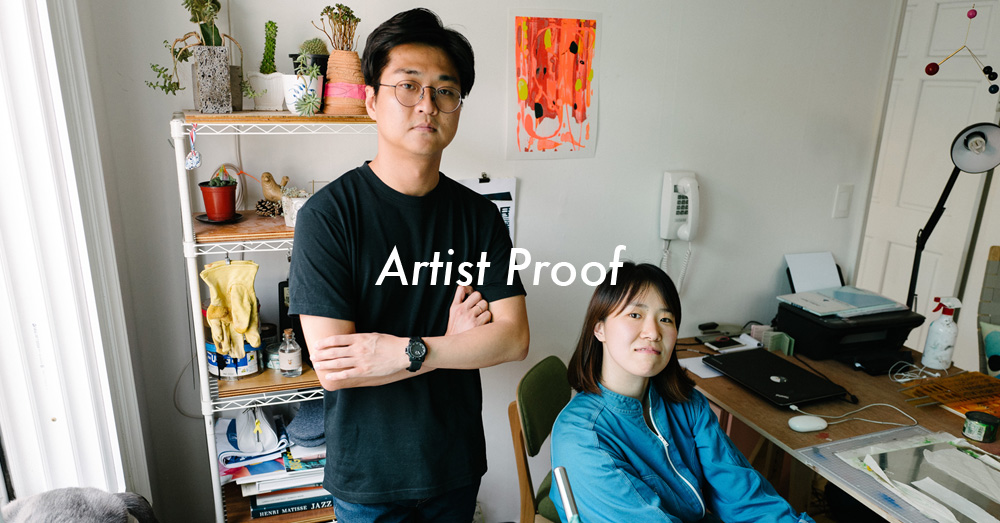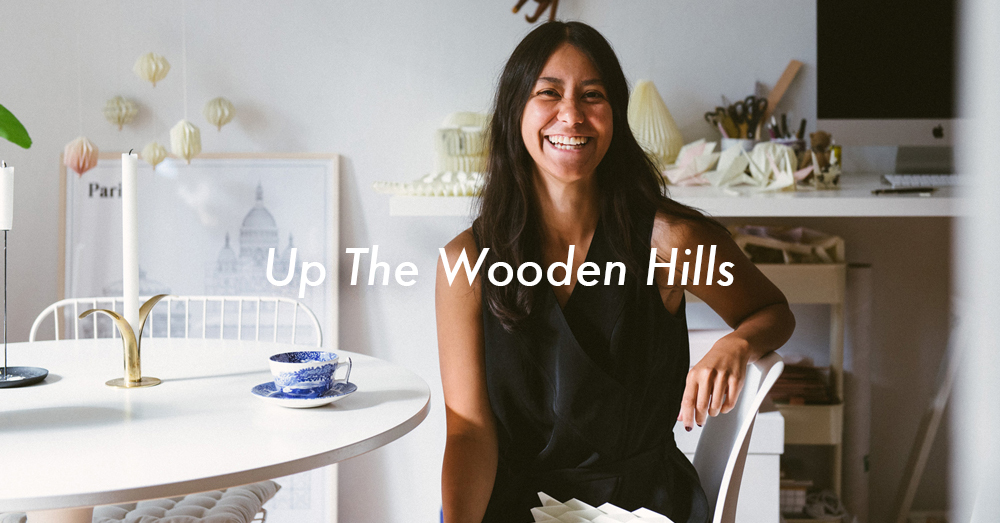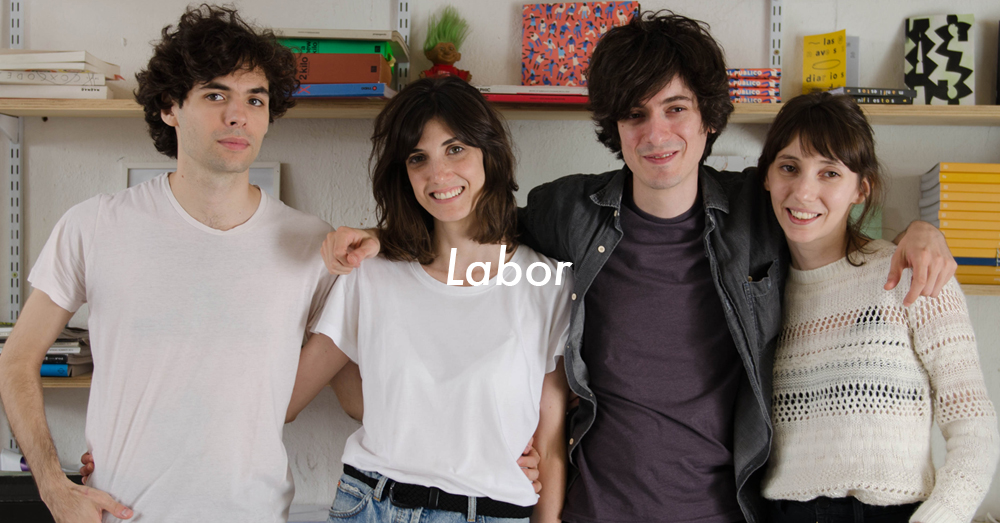Stelian Dobrescu & Ana-Maria Grigoriu
LOOT
Couple Ste and Ana founded their design studio LOOT in Bucharest in 2014 after spending a year in London. After LOOT, their magazine JUG and their shop LOOTForever followed.
We chat with Ste and Ana about how they manage to run multiple projects at the same time, the inspirations behind their design work and what’s next in the upcoming months.
Photos by Claudia Cristea
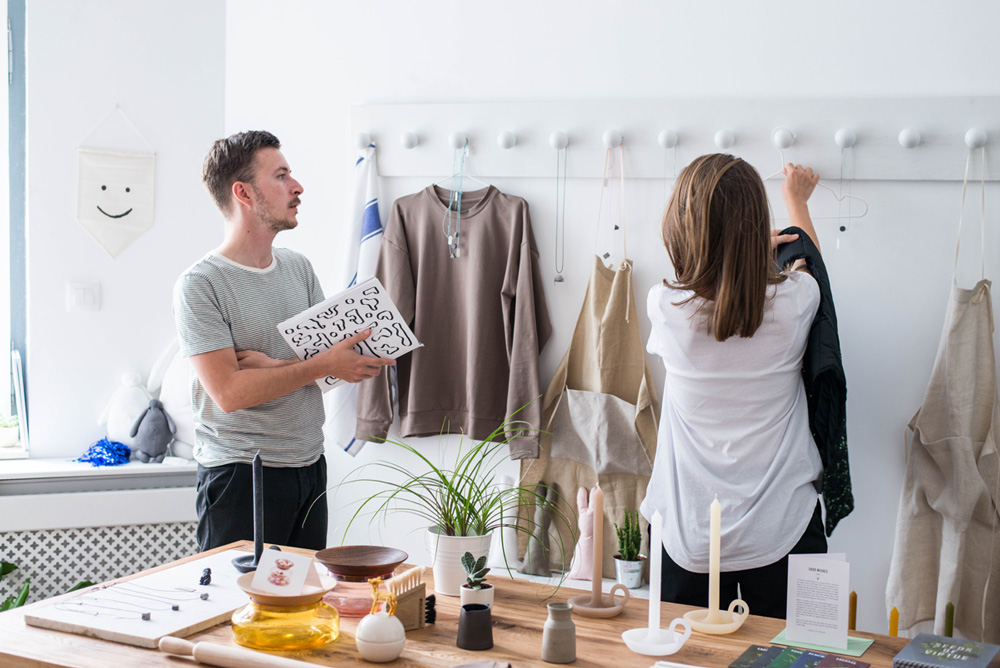
Could you please introduce yourselves and tell us a little bit about your background and education?
Ana: I’m the one with the formal education. I have a master’s degree from University of Arts London, where I studied graphic design communication.
Ste: And I’m self- taught. I studied political sciences & economics but those are mainly hobbies now.
We lived in London for around a year and that influenced us quite a bit. We got the business model for our studio over there – you can find lots of two or three-people studios working on major projects and doing amazing work. Staying in London also made us use phrases like ‘quite a bit’ more often.
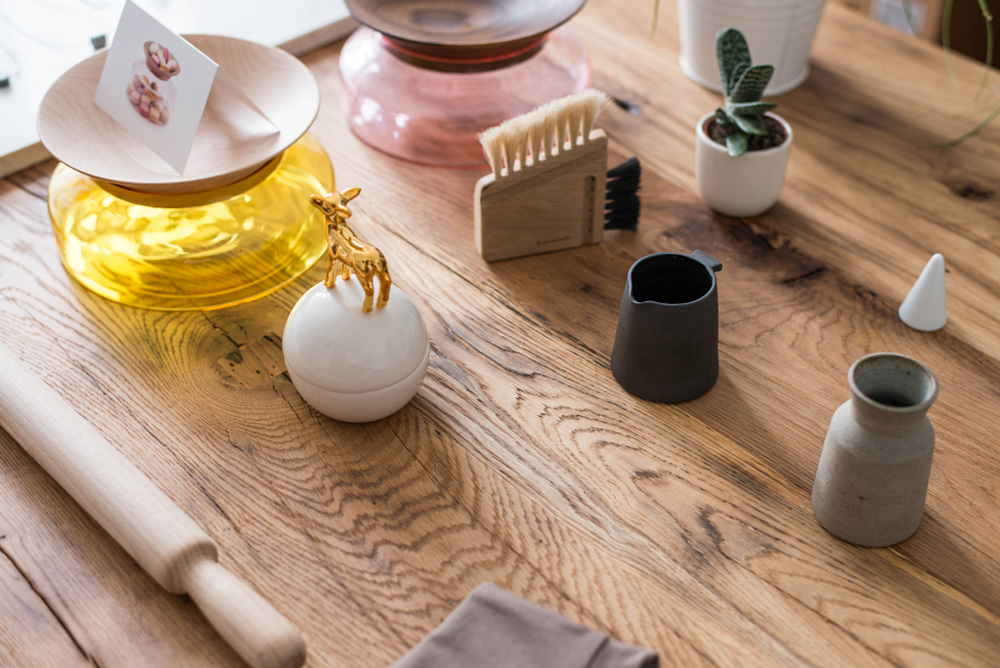
What made you start LOOT together?
Ana: We’re a couple, which we’ve been told is something worth noting. We started LOOT in 2014 after coming back from London. As for most people who start thinking about doing something on their own, we’ve gone through a phase of uncertainty, when you’re not sure if what you’re planning to do will actually work.
There’s all sort of stuff that you have to go through – from bureaucracy to finding a suitable space. Of course, that might not seem like much, but we’re talking about a post-communist country here and you can probably imagine what that means.
LOOT is our strive to be part of the group of designers that act on changing the rules of design. Actually, maybe it’s more appropriate to say ‘destroy’ the limitations of design, both conceptually and physically. It’s a business, but we want ours to be a business with a manifesto. Consequently, we’ve written one. We want to know our place in the world, to know the meaning in what we do as much as we can. That’s why we started LOOT – to not have anyone tell us what to do or how we should treat our work.
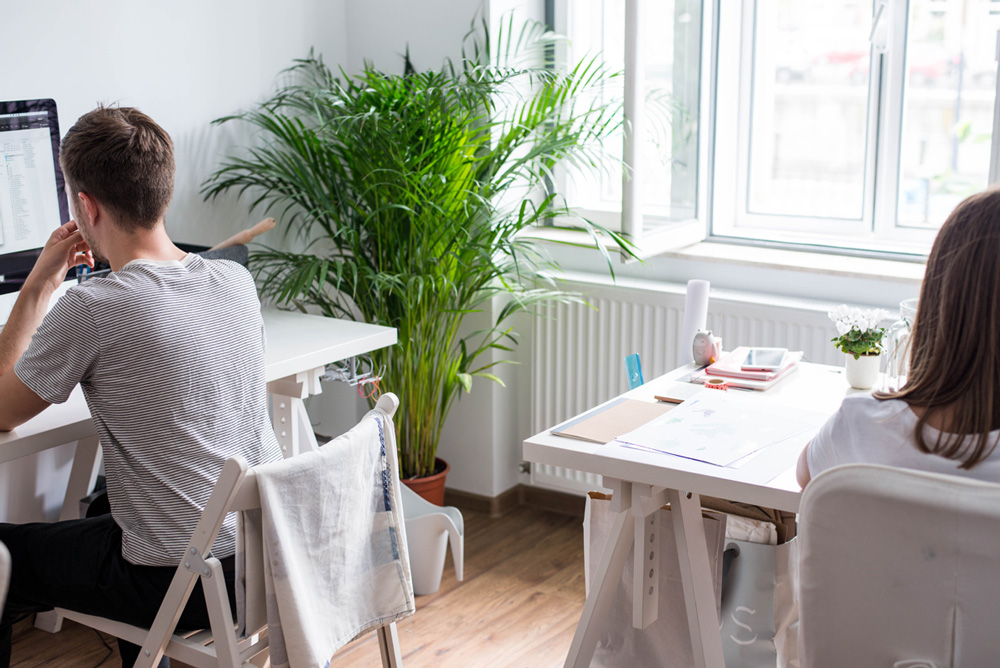
You’re a design studio but you also run your own shop and magazine. Could you briefly tell us about each of them? Which one came first?
Ste: Yup, lots of people ask how we handle all of them. We’re aiming to create a whole ecosystem centred around design.
Our graphic design studio came first. After doing that for a couple of years, fuelled by the magazine revolution going on in the world, we decided to start our own magazine called JUG. The purpose was to internationalise local subjects and to show the context of the things going on around us. Well, in retrospect, I think we couldn’t have found a more niche combination than Romanian journalism coupled with visual arts. What’s good about having your own magazine with few people involved is that you can change it, so that’s what we did with the second issue. Now it’s more design-centred, universal and more fun to read.
Ana: As for the shop, opening it came, somehow, naturally as we’re always looking for nice objects and garments that will fill our lives with prettiness. Most of the objects are functional, but we’re pretty proud of the other ones that are not that practical- like a super tiny copper spoon that we bought from a local shop and that we can’t really do much with.
When travelling abroad, the first places we visit are small design shops, coffee shops and independently run places. We kind of got the taste and wanted to have our own here in Bucharest.
Ste: The store is also the solution we found when we were thinking about scaling the studio. We were happy with the design work and didn’t want to scale it by bringing in more people and finding more work. What’s great about a store is that you can expand it indefinitely, it’s a whole other business with other rules and it gets super fun to run it at times.
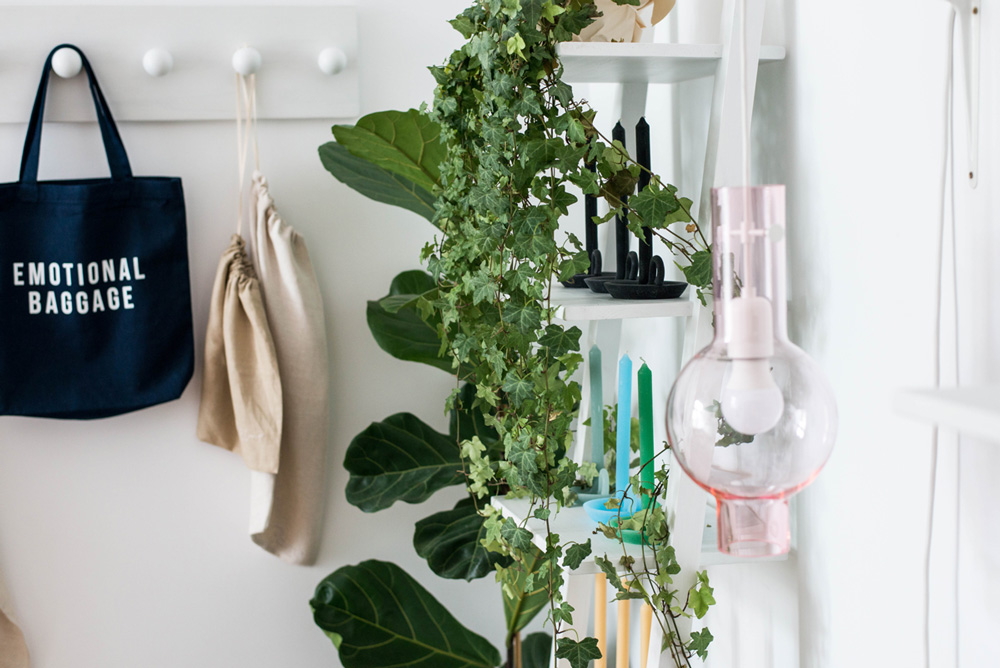
How would you describe your design work? What are some of your favourite projects you’ve worked on so far?
Ana: We usually like the projects in which we’re responsible for the whole branding process – from naming and visual identity to service design. Our approach is based on the notion that good design is design you and your client both like. Of course, you could say it in a million fancier ways, but that’s basically it. Liking it means that it works well, it’s functional for the people you intend to use or view it, and you had fun in the process of making it. Bad design is the opposite of that.
We’ve worked on a brand that produces cold pressed juices. It was founded by Amra, who is from Bosnia, lived in Australia for about 10 years because of the war and then ended up in Romania and started Cold Pressed Juicery. We’ve also worked with Gary, a guy who left his career in advertising and moved out of London with his kids and now runs Lucky Cup Tea, a brand that sells wonderful tea blends in the UK.
We’re working with all kinds of people under this simple scheme – they come to us to because they want to build something that’s pretty important and meaningful in their lives and we’re helping them build it.
Our personal projects are also an important part of what we do at the studio. Some of them see the daylight, like JUG or the shop, others don’t or are stacked away for later use, but all of them are significant because they help us define what we are.
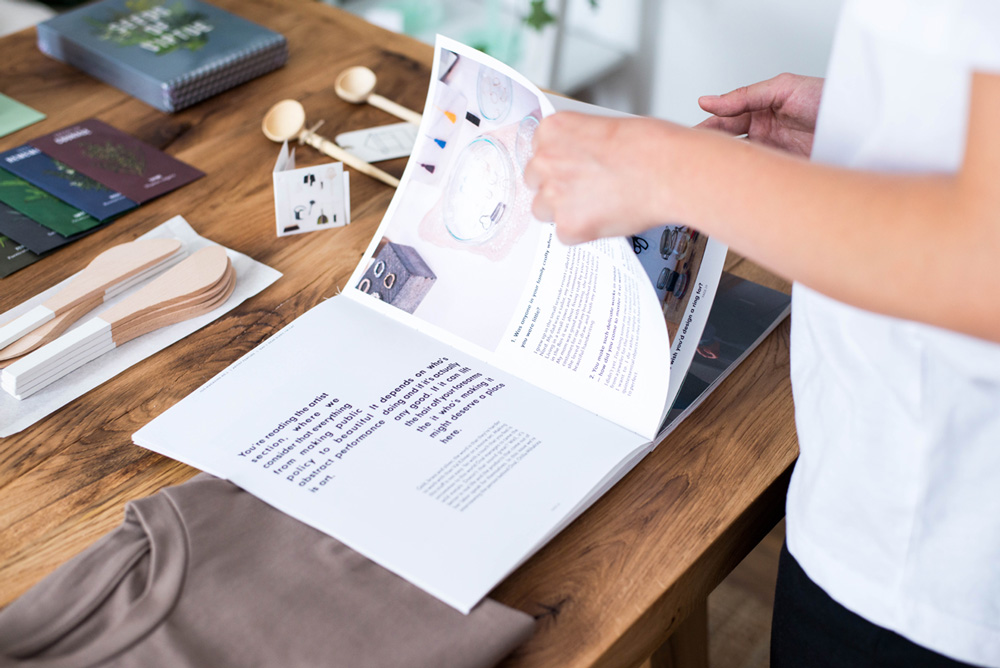
How do you select the products you sell in your store LOOTforever? Tell us a little bit about the different products and brands you stock at the moment.
Ste: LOOTforever works under a hybrid model. On one hand you have the retail side, where we search for the best products we can find from all over the world and make them available locally. It’s a selection of things we’d buy, produced under ethical business models and that are somehow linked to design. The School of Life is a UK brand that you’ve probably heard of – they make products with philosophical references and they’ve become very well known in the past year. Iris Hantverk is a Swedish brand that works with visually impaired people to produce beautiful goods for home use. Jono Smart is a potter who now lives in Scotland and makes the most amazing ceramic objects we’ve seen in a while. There are also a bunch of local brands like Prosper Centre – who are making stock market or popular culture inspired clothing- or VisuellAtelier run by Sinziana who produce furniture and useful design.
The other part of the shop is production. We make our own garments and design objects. That’s tricky as hell, because it’s hard to match the offer of big chains, but what we’ve found is that there’s room on the market for everyone. We’re doing good and we’ve just been opened for a few months. We’re currently planning to have a pop-up shop in London and we’ll see where it goes from there.
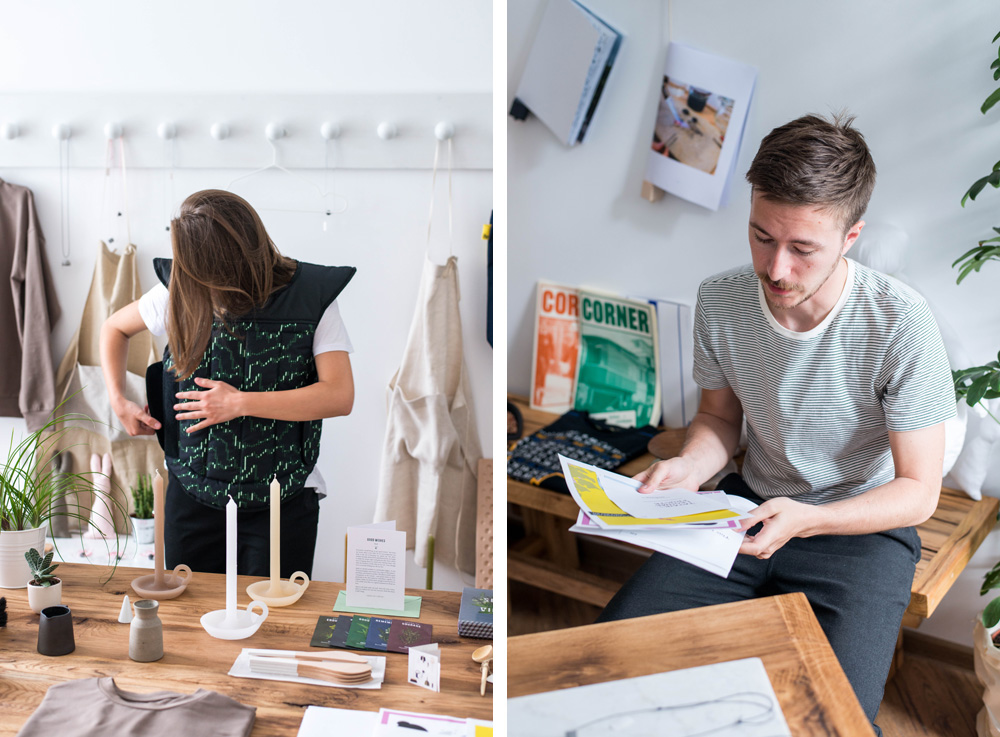
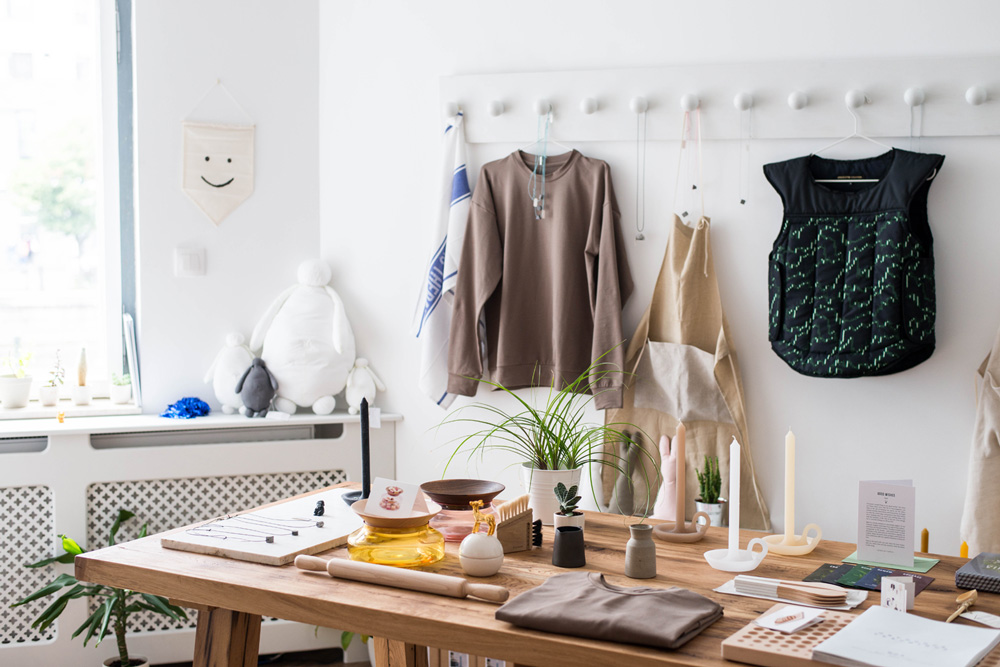
You’ve just published the first issue of your magazine JUG, could you tell us about its contents and what people can find inside its pages?
Ana: The first issue is more political in nature. It’s a mix of visual arts and independent journalism. Design-wise, we were pretty well-behaved, the whole magazine is designed on a specific grid and the focus was on the information.
The second issue is totally different. Producing a magazine teaches you lots of things about what people like and what they’d read. Last year, when we printed the first issue, we didn’t know where the whole concept would go. We just knew that people were interested in participating, even though we didn’t have anything close to a budget.
We were planning to print it every 3 months but, as it later turned out, putting together a magazine is an incredible effort. So we tried to simplify everything – from the business model to the way people would write articles. No. 2 is the result of that. We’ve gone from a self produced, annual print-only magazine to completely breaking the print magazine model. With no.2 we’re gonna sell separate articles, printed a few days after they are written. We’re also selling prints with artworks from JUG. Plus we’re making an online platform with feeds from people we like – that way the printed JUG will be a funnel for the content which is most relevant. It’s totally changed.
JUG is similar to life, where everything happens all at once: opinion articles, artist features, a family feature, an experimental section, photo essays and all kinds of Easter eggs. From our point of view, the magazine is right where we want it to be, we now just have to wait and continue pushing things forward on the same track.
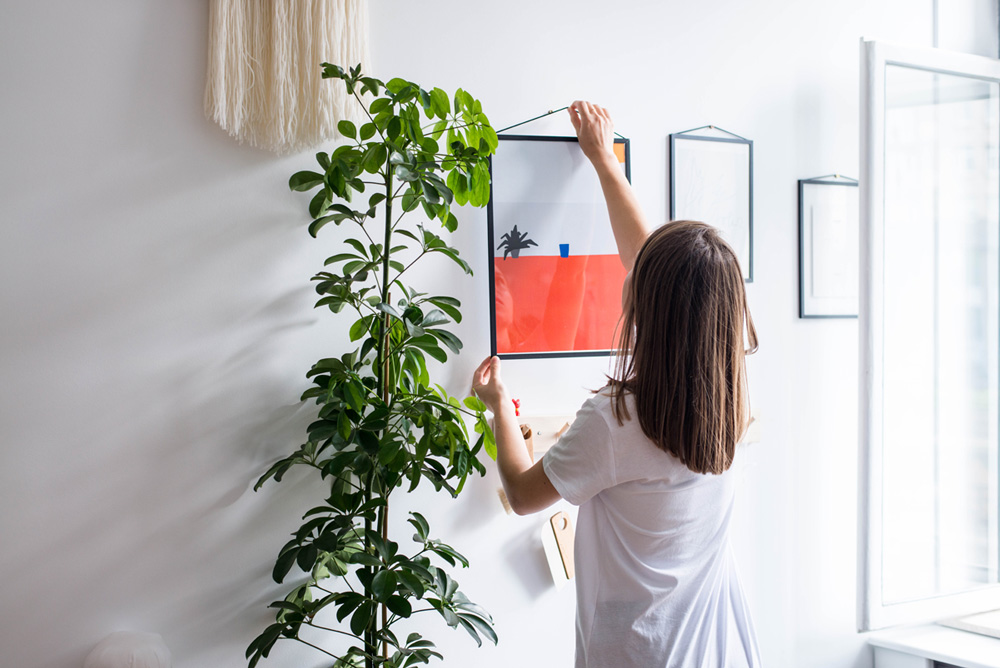
Going back to your design work and the work you’ve done with JUG, would you consider your style is influenced by living in Romania in some kind of way?
Ste: We’d say no, but it actually is. We’d also say yes, but it’s influenced as much by things from elsewhere around the world as it is by stuff going on around us. We are pretty convinced that for a while now we’ve been part of a global design market. Well, you could even say that it’s a global people market, free from governments and concerned but not limited by local restraints.
There’s no doubt that you can see Romania in us. There’s some stuff that can be pretty hard to understand from outside – from slav squat to why we’re good on foreign construction sites and know how to negotiate change orders. We’ve also had a communist government – which sucked in pretty much every possible way – we’re the lucky ones that got to live after that. And even if that was a while ago, you can still see it in people.
Getting back to JUG, the magazine is international and we haven’t set a local agenda for it. It’s more about a way of looking at things than a place.
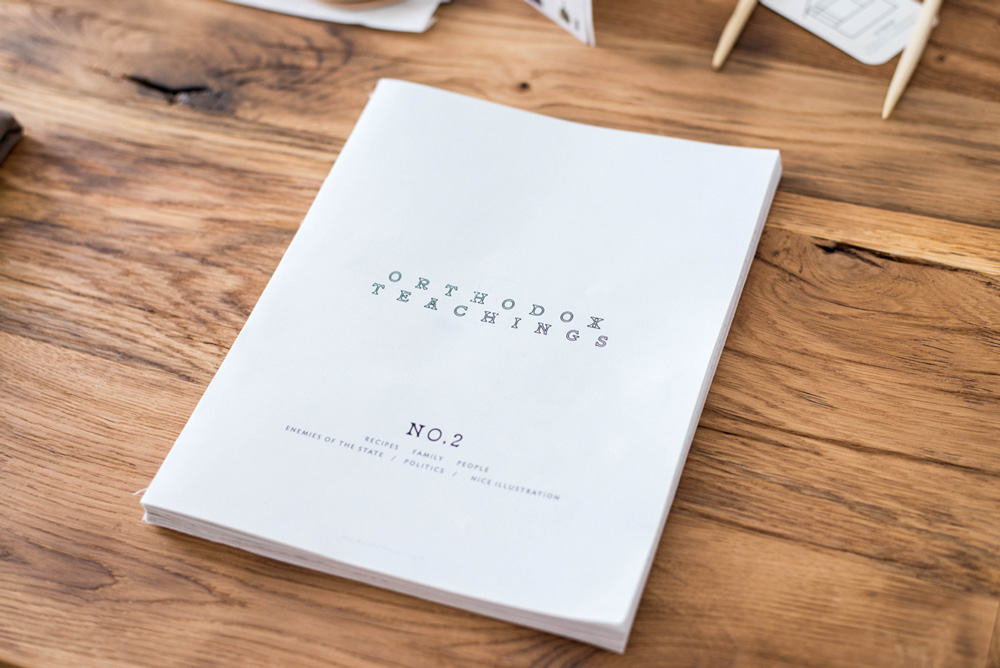
What are your plans for the upcoming months? Is there any particular project you’d like to develop in the future?
Ana: We’re doing the crowdfunding for JUG no.2 – we encourage you to participate, by the way, because we’ve just launched the campaign. After that’s done, we’ll focus a bit on the shop and production – we’ve got lots of sketches that need to see the daylight.
If things go well, we’re planning to open a pop-up shop in London in October. We don’t really care if Britain is outside the EU, because the union is about people travelling and making useful stuff, not treaties or bureaucracy, so we’re also doing this to prove that.
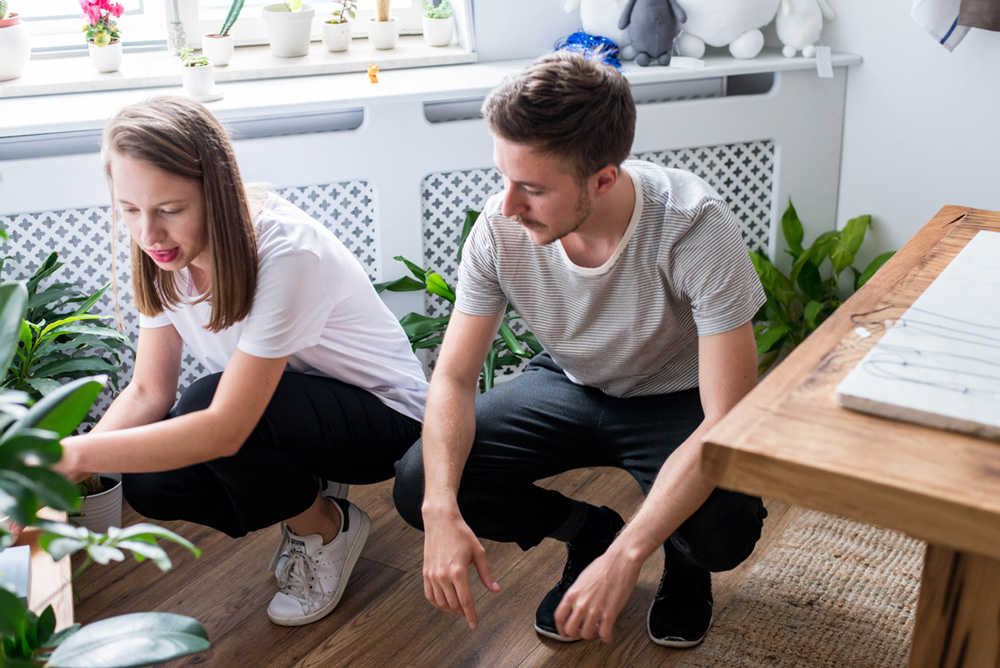
We’re part of the team of CreativeMornings here in Edinburgh and we’ve seen you co-host CreativeMornings/Bucharest, how would you describe the creative community in the city?
Ste: We co-hosted CreativeMornings in Bucharest in 2014 and 2015 together with a friend of ours, Andreea Vrabie – it was actually how we met, because we wanted to bring it here at the same time. Tina and her team did a great job when starting CreativeMornings!
The creative community is a term we’ve been struggling with. We’d want it to be real, we’d want it to be bigger and we’d want it to be a community. You have events, you have the output, you have the people, but you also have to understand that we’re talking about something which is a generation old at best. So right now we’re the teenager who lacks the self-confidence and is still trying to find out what real life is about. Plus you have the occasional pimple which turns into the major short-term drama.
We’re in an interesting place. There’s a lot of energy, there’s the sense that it’s worth overcoming something (although we’re not sure what that something is). People younger than us (we’re 27 by the way) start catching momentum and build on the land we’ve laid out, just like others laid it out for us.
CreativeMornings is a great place where important interactions happen. We also have an annual Romanian Design week plus many other independent events which pave the way for an actual community.
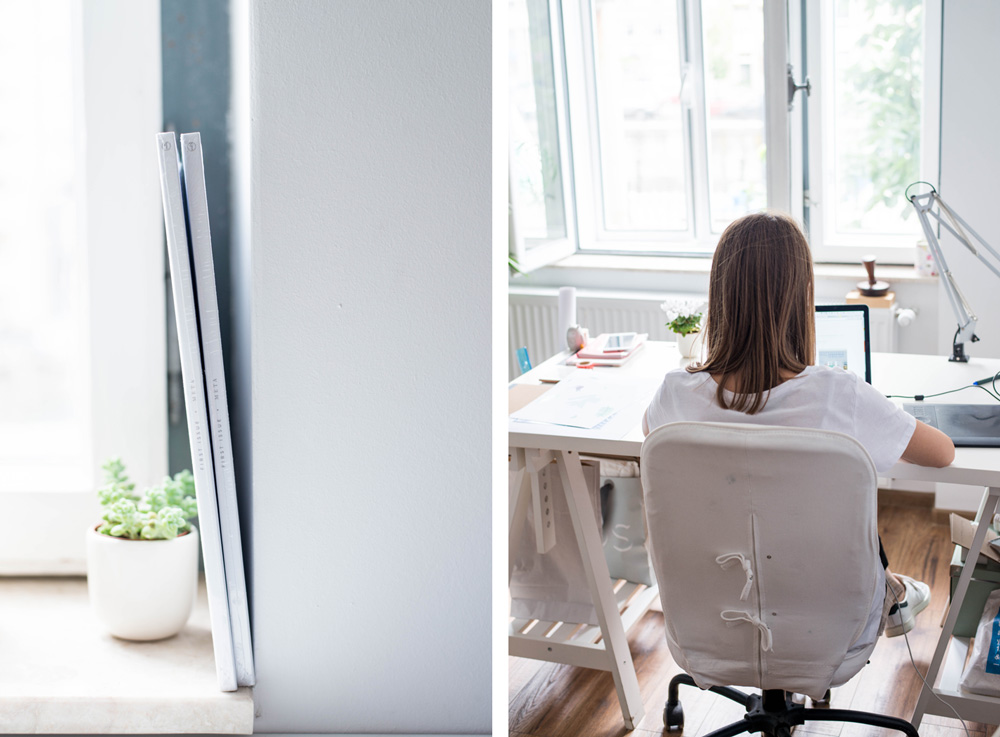
What designers, artists, etc. from Romania we should know about?
Ana: Tudor Prisacariu – he’s a photographer, designer and web dev, which makes him sort of a context-switching monster. Mircea Mocanu, under the pseudonym Other. There are also good typographers like Ovidio Hrin working at Synopsis Media and Andrei Robut.
Ste: There are also some artists which we label as ‘dope’: Mircea Cantor, OVAL who’s a jewellery artist and recently won a special prize at London Fashion Week and Milos Jovanovic, responsible for Studio 82 and Tata+Tata.
Also awesome illustrators like Saddo, Noper and Aitch. Plus a lot more that we probably didn’t mention.
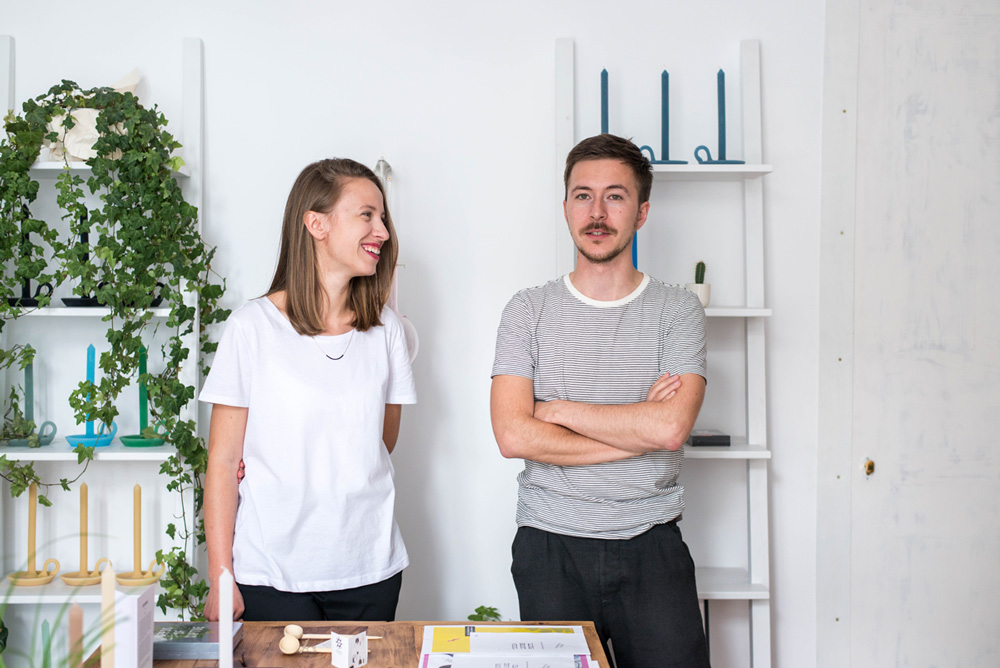
What are some of your favourite places in Bucharest?
Ste: We usually have coffee at Origo – we also draw their blackboard menu every season and they’re super nice, from the coffee they source to the way they greet you in the morning.
There’s also A3, where you can get some killer fries and meet half of Bucharest’s laidback avant-garde. There’s a nice gallery that opened as part of a fancy shoe shop – Kube Musette. And The Institute, which hosts Romanian Design Week.
Also, if you pass by Bucharest make sure to check these other places:
Mestesukar Boutiq – stuff produced by local gipsies, also best place to get a tiny broom.
Kid You Not – all you minimalist Instagrammers rejoice.
club FORM – cuisine cooking & occasional techno.
Ai – if you’re into sushi.
M60 – get coffee, eat something, talk about serious business.
Frudisiac – get coffee, eat something, talk about the life of celebrities.
club Control – get a beer, eat something, talk about getting a cocktail next time.
Interbelic Victoriei – actually get a cocktail, make a selfie using their pre-designed neon lights
Intro shop – these guys have been selling design stuff for about 12 years
Cercul Militar / Casa Universitarilor / Hotel Triumf – old school grumpy communist waiters.

